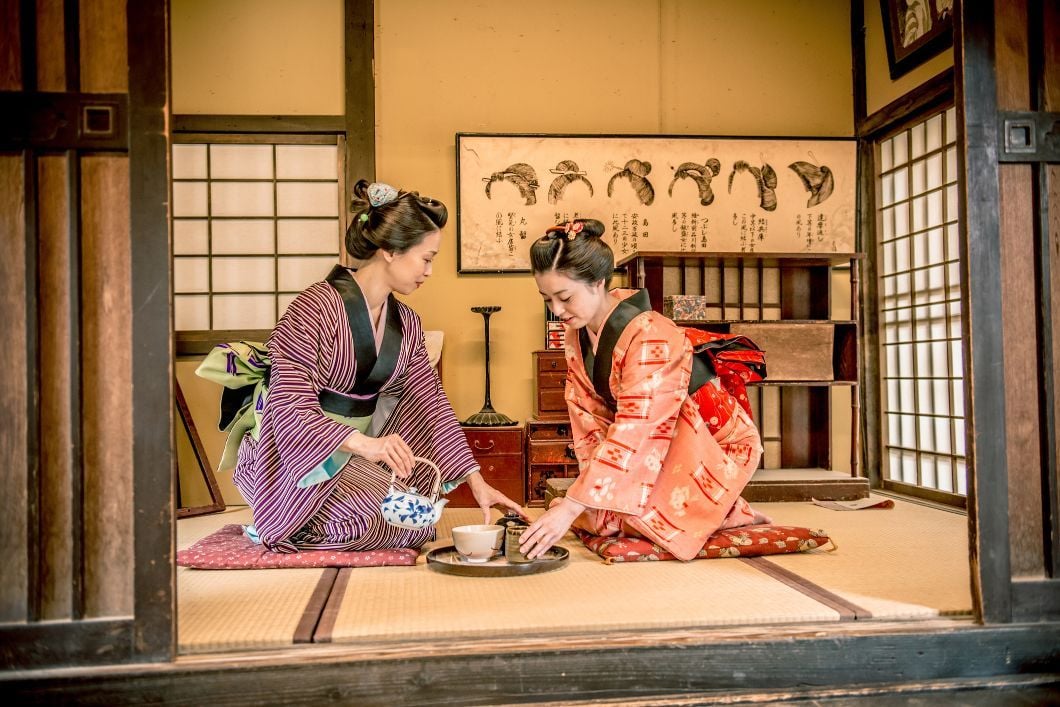There are only so many trees in the world, and thanks to the carbon-capturing qualities, the prospect of cutting them all down doesn’t seem to be a particularly wise one. At the same time though, forestry will undoubtedly continue, and we as a society, will need still wood. This is not a new issue, and it’s one that, with their penchant for wooden architecture, Japan had to address as far back as the 14th century.
This was during the Muromachi period, which ran from 1336 to 1573 and marked the governance of the Muromachi or Ashikaga shogunate over Japan. It was during this time that the tea ceremony became particularly popular, and as such, tea houses, which were built in the simple but elegant ‘sukiya-zukuri’ architectural style and required smooth, straight logs, were in high demand.
Faced with a shortage of seedlings and struggling to grow trees on the slopes of Kitayama, near Kyoto, the local people developed the horticultural technique of ‘daisugi’. Written in Japanese as 台杉, it translates as 'platform' or 'stage' cedar.
The technique is also referred to as Kitayama sugi or Kitayama daisugi.
A guide to the art of Daisugi
The result of the technique is that you’re able to grow and harvest tall, perfectly-straight trees as shoots from other trees. The shoots provide ideal lumber whilst saving the mother tree from the chop.
This was primarily a technique cultivated in the cedar forests surrounding Kyoto and planted in mountainous terrain, and it can still be seen around temples, such as the Soren-Ji Temple, seen in the video above, and in private gardens in Kyoto.

Of course, this is not the only remarkable case of horticultural ingenuity in Japanese culture. The art of bonsai, which produces dwarf trees in the image of fully grown tree species, and which dates back to the sixth century, is world famous. Bonsai-style techniques are used in daisugi. Cedar trees are pruned in order to produce shoots, and those shoots are then also pruned, any branches being carefully removed, in order to produce a straight, knot-free shoot of wood.
In an essay on Japanese vegetative propagation from 1973, academic R Toda wrote of the process of daisugi, telling the reader how "basal branches of a stem are kept alive by heavy limb pruning and, after the felling of the stem, the stump is maintained and several new stems grow up from the retained basal branches."
Another academic document from the Japan Society of Forest Planning notes that "the trees are pruned 5-6 years after planting leaving only branches at about 0.6 m above the ground, above this the trunks are cut and pollard shoots allowed to grow from the remaining trunks; The shoots are selectively harvested, producing a standard size that is used for building materials."
It’s not dissimilar to coppicing techniques in Britain, though the results are often slightly more spectacular, which is why even as the demand for the housing style of sukiya-zukuri died out, the technique remained in ornamental Japanese gardens, and is maintained to this day by some - and of course, there's the obvious environmental benefits of the fact that this helps avoid a level of deforestation.
Japan is famous for the beauty of its flora and tree life, and hiking in Japan often involves stumbling upon such wonders. Another cedar, the Jomon Sugi, the largest and oldest tree on the island of Yakushima, is believed to be between 2,170 and 7,200 years old. The cedars are just another distinctive and remarkable part of Japanese culture.
Inspired? Check out our range of adventure holidays in Asia now.

